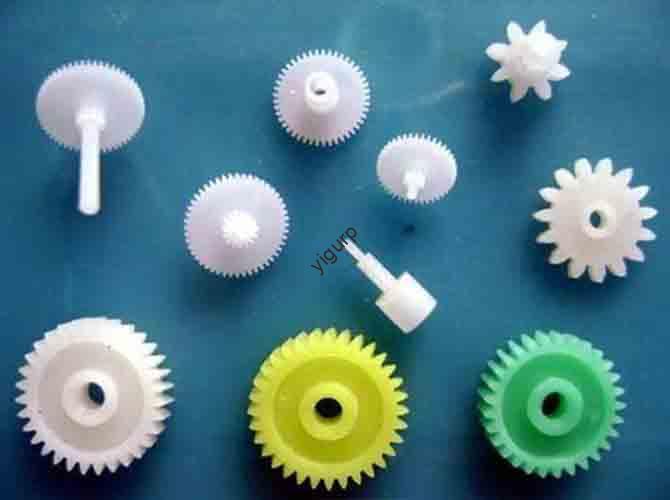Dans le monde de la fabrication au rythme rapide d'aujourd'hui, businesses and engineers constantly seek technologies that cut costs, boost flexibility, and enable innovation. One solution that has risen to prominence? 3D additive printing (également appelé 3D Impression or additive manufacturing, SUIS). But what exactly is it, Comment ça marche, and can it solve your production challenges? Ce guide décompose tout ce que vous devez savoir.
1. What Is 3D Additive Printing? Définition & Principes de base
En son cœur, 3D additive printing is a digital manufacturing process that builds three-dimensional objects by adding material layer by layer—unlike traditional “subtractive” methods (Par exemple, Usinage CNC) that carve or cut material from a solid block.
Key Principles of 3D Additive Printing
- Digitized Foundation: It starts with a 3D model created using CAD (Conception assistée par ordinateur) or CAM (Fabrication assistée par ordinateur) logiciel. This file acts as a “blueprint” for every layer.
- Construction de couche par couche: The printer reads the CAD file, splits it into thousands of thin 2D layers, and deposits or fuses material (Par exemple, plastique, métal, résine) one layer at a time—stacking them vertically to form the final object.
- No Molds Required: Contrairement au moulage ou à la moulure d'injection, there’s no need for expensive, time-consuming molds—making it ideal for rapid prototyping and small-batch runs.
2. 3D Additive Printing Technologies: Espèces & Leurs applications
Not all 3D printing technologies are the same. They vary by energy source, matériel, and molding method. Below is a breakdown of the most common types and where they excel:
| Nom de technologie | Source d'énergie | Matériaux communs | Applications clés | Avantages |
| Stéréolithmicromographie (Sla) | Laser UV | Résine photopolymère | Prototypes, modèles dentaires, bijoux | En détail (0.1précision en mm), surfaces lisses |
| Maisse au laser sélective (GDT) | Fiber Laser | Poudres métalliques (acier, aluminium) | Pièces aérospatiales, implants médicaux | Fort, durable metal components |
| Maisse par faisceau d'électrons (EBM) | Electron Beam | Titane, cobalt-chrome | Implants orthopédiques, Structures aérospatiales | High-temperature processing, déchets minimaux |
Cas d'utilisation du monde réel
- Aérospatial: Boeing uses SLM to print lightweight turbine parts, reducing fuel consumption by 15%.
- Médical: Hospitals create custom 3D-printed prosthetics (Par exemple, hand implants) that fit patients perfectly—cutting wait times from months to weeks.
- Automobile: Tesla uses 3D printing to prototype battery housings, slashing development time by 40%.
3. Avantages vs. Défis: Can 3D Additive Printing Solve Your Problems?
To decide if 3D additive printing is right for you, let’s weigh its strengths against its current limitations:
Avantages (How It Solves Key Pain Points)
- Complexity Without Extra Cost: Print intricate designs (Par exemple, structures en treillis, canaux internes) that are impossible with subtractive methods—no additional labor or tools needed.
- Utilisation élevée des matériaux: Jusqu'à 95% of material is used (contre. 50-70% en usinage CNC), Réduire les déchets et réduire les coûts des matériaux.
- Personalization at Scale: Create custom products (Par exemple, dispositifs médicaux personnalisés, branded promotional items) without slowing down production.
- Prototypage rapide: Turn a CAD design into a physical prototype in hours (pas des semaines), accélérer les cycles de développement de produits.
Défis (What to Consider)
- Vitesse d'impression: Large or thick parts can take hours or days to print—still slower than mass-production methods like injection molding.
- Limitations de matériaux: Quelques matériaux (Par exemple, plastiques à haute température, certain metals) are expensive or lack the strength needed for heavy-industry use.
- Cost-Benefit Balance: Pour une production à volume élevé (10,000+ unités), traditional methods are still cheaper. 3D printing shines most for small batches or prototypes.
4. Tendances futures: Where Is 3D Additive Printing Headed?
À mesure que la technologie progresse, these challenges are being addressed. Here’s what to expect in the next 3-5 années:
- Faster Printing: Nouvelles technologies (Par exemple, jet de liant) are doubling print speeds, making 3D printing viable for more mid-volume applications.
- Wider Material Range: Companies are developing affordable, high-performance materials—including recycled plastics and bio-based resins.
- Finer Accuracy: Printers with 0.05mm resolution will become more accessible, opening doors for micro-manufacturing (Par exemple, tiny medical sensors).
- Cross-Industry Expansion: Expect growth in fields like construction (3D-printed homes) and food (custom-shaped snacks or nutrient-specific meals).
5. Yigu Technology’s Perspective on 3D Additive Printing
À la technologie Yigu, Nous voyons 3D additive printing En tant que pierre angulaire de la fabrication intelligente. It aligns with our mission to help clients reduce waste, speed up innovation, and adapt to changing market demands. We’ve supported aerospace and medical clients in adopting SLM and SLA technologies—for example, helping a dental lab cut prosthetic production time by 50%. While challenges like speed remain, we’re investing in software integrations (Par exemple, CAD-to-printer workflow tools) to make 3D printing more efficient. For businesses ready to move beyond traditional manufacturing, 3D additive printing isn’t just a trend—it’s a strategic tool.
FAQ: Your Top 3D Additive Printing Questions Answered
- Q: Is 3D additive printing suitable for mass production?
UN: Actuellement, no—for batches of 10,000+ unités, méthodes traditionnelles (Par exemple, moulage par injection) are cheaper and faster. But it’s ideal for small batches (1-1,000 unités) and personalized products.
- Q: What materials can I use for 3D additive printing?
UN: Common options include plastics (PLA, Abs), métaux (aluminium, titane), résines, and even specialty materials like carbon fiber or ceramic. The choice depends on your application (Par exemple, Résine pour le détail, metal for strength).
- Q: How much does a 3D additive printer cost?
UN: Entry-level desktop printers start at \(200-\)500 (pour les amateurs), while industrial-grade printers (Par exemple, SLM for metal) varier de \(50,000 à \)1 million. The cost also includes materials and software.
